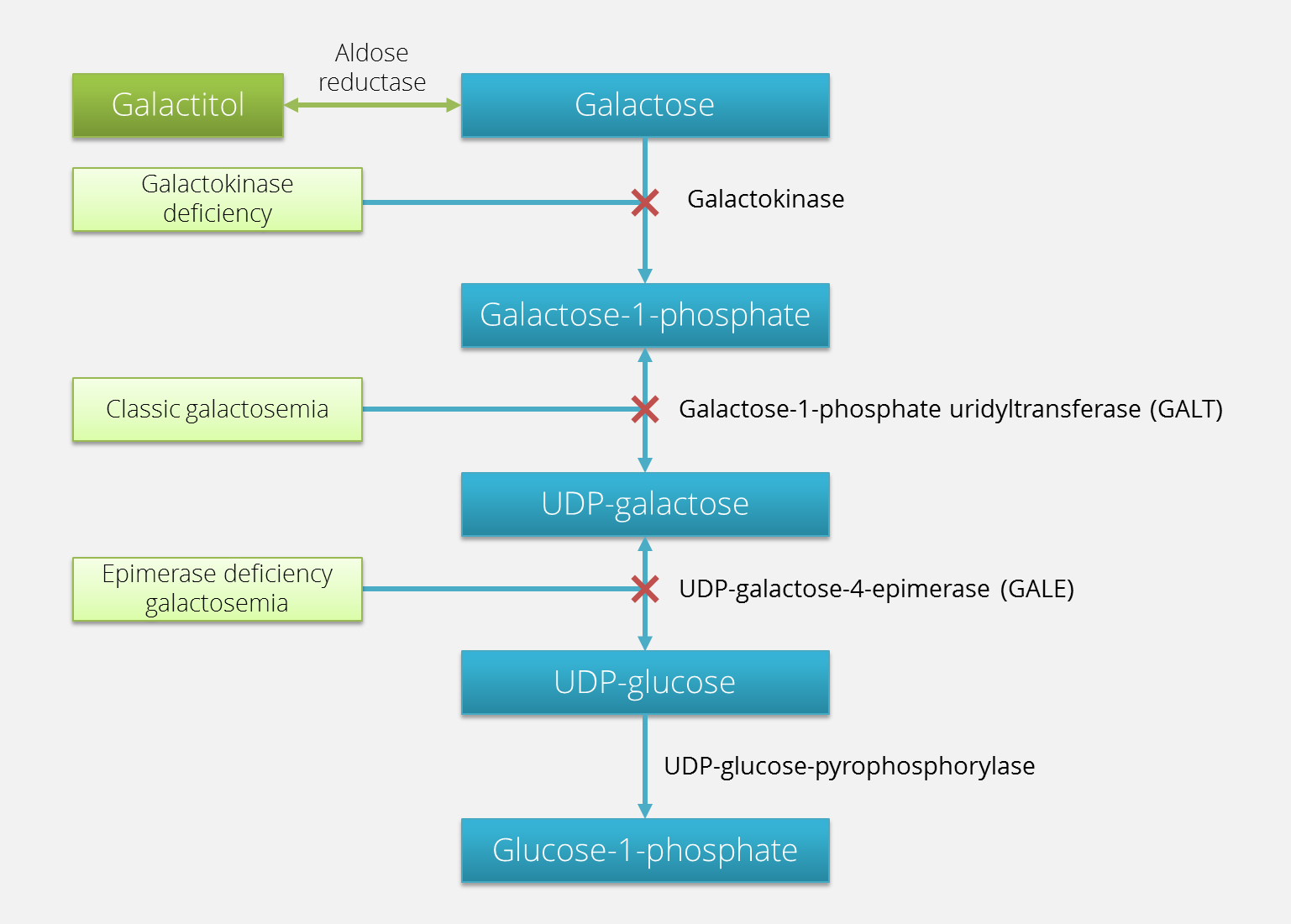WBR0910
Jump to navigation
Jump to search
| Author | [[PageAuthor::Rim Halaby, M.D. [1] (Reviewed by Serge Korjian)]] |
|---|---|
| Exam Type | ExamType::USMLE Step 1 |
| Main Category | MainCategory::Biochemistry |
| Sub Category | SubCategory::General Principles |
| Prompt | [[Prompt::A 1-year-old boy is brought to the pediatrician for a well-child visit. During the physical examination, the pediatrician notices that the baby is unable to follow his gestures with his eyes. Upon further questioning, the mother reports that her son is not very interactive with people and does not seem to be intrigued by what is going on around him. The child is otherwise healthy and growing adequately. The pediatrician suspects a metabolic disorder and requests a radiolabeled 14C galactose analysis. Which of the following enzyme deficiencies is most likely present? |
| Answer A | AnswerA::A |
| Answer A Explanation | [[AnswerAExp::Galactokinase deficiency is characterized by the inability to transform galactose into galactose-1-phosphate with subsequent accumulation of galacticol. It is a relatively benign disorder, with galacticol accumulation leading to early-onset cataracts if the proper diet adjustments are not made.]] |
| Answer B | AnswerB::B |
| Answer B Explanation | [[AnswerBExp::Classic galactosemia is an autosomal recessive disease characterized by the absence of galactose-1-phosphate uridyltransferase (GALT) resulting in the accumulation of galactose-1-phosphate, galactose and galacticol. Although classic galactosemia is associated with cataracts, it is a more severe illness associated with mental retardation, failure to thrive and jaundice.]] |
| Answer C | AnswerC::C |
| Answer C Explanation | AnswerCExp::UDP-galactose-4-epimerase (GALE), also known as UDP-glucose-4-epimerase, catalyzes the reversible conversion of UDP-galactose to UDP-glucose. The deficiency of this enzyme results in symptoms similar to those of classic galactosemia. |
| Answer D | AnswerD::D |
| Answer D Explanation | [[AnswerDExp::Aldose reductase converts galactose to galacticol. Its deficiency does not lead to cataracts. Based on animal models, it is hypothesized that the lower the expression of aldose reductase the better the individual is protected from cataracts and atherosclerotic cardiovascular disease.]] |
| Answer E | AnswerE::E |
| Answer E Explanation | AnswerEExp::UDP-glucose-pyrophosphorylase converts UDP glucose to glucose-1-phosphate. This deficiency is yet to be reported among humans, or is likely benign and asymptomatic. |
| Right Answer | RightAnswer::A |
| Explanation | [[Explanation::Galactokinase deficiency is a mild autosomal recessive galactose metabolism disorder. It is characterized by the accumulation of galactose in the blood and urine and elevated levels of galacticol. The accumulation of galacticol is associated with the occurrence of cataracts resulting in decreased vision that can be suspected by the inability of the patients to track objects with their eyes and absence of social smiling. Galactokinase deficiency is different from the more severe classic galactosemia and is not associated with mental retardation, failure to thrive and severe symptoms of jaundice and vomiting.
|
| Approved | Approved::Yes |
| Keyword | WBRKeyword::Galactose, WBRKeyword::Galactosemia, WBRKeyword::galactokinase, WBRKeyword::galactokinase deficiency |
| Linked Question | Linked:: |
| Order in Linked Questions | LinkedOrder:: |

